Crew 297 – JANUS I
Apr 14th – April 27th, 2024
Crew Members:
Commander and HSO: Pawel Sawicki
Executive Officer: Matthew Storch
Crew Engineer: Matthew Lynch
Crew Geologist: Sarah Lamm
GreenHab Officer: Sean Marquez
Crew Journalist & Crew Engineer: David Laude
Mission Plan:
The 297th crew at MDRS is composed of a team of seven astronauts, coming from an assortment of diverse backgrounds and careers. With over a cumulative fifteen degrees between the crew, conducting research is ingrained within the planned mission. Janus I will investigate many subdisciplines of science and engineering, specifically geological field spectroscopy, operations of nuclear power systems, developing smart sensor-based systems, and Martian-appropriate advancements in IT. While it is ideal for the PI of a research project to also be involved as a mission specialist, a la the Space Shuttle era, it is acknowledged that astronauts will need to tend to other projects and be participants themselves. As such, Janus I also involves other research projects from academia involving studies pertaining to isolated confined environments and human-robotic interaction.
Janus I, the name of this specific MDRS mission, stays in line with NASA’s tradition of naming extraterrestrial explorations after ancient mythological beings. Janus is the Roman god of duality, transitions, and beginnings – a deity appropriately aligned with the goals of MDRS.
Crew Projects:
Title: Simulated Deployment of a Nuclear Power System: Logistics and Operational Challenges
Principal Investigator: Matthew Lynch
Description: Initial mission to Mars will deploy with advanced radioisotope power systems (RPS) or fission power systems (FPS) to power in-flight needs and initial base deployment. However, the ever-expanding work-scope on Mars will dictate increasing power requirements and new reactors will be sent from earth for these power demands. Due to the hazardous nature of these materials the delivery landing site will not likely be near the Martian base. To represent this within sim, one EVA team will hide an analogous (inert) NPS, and provide an estimated GPS coordinate to a second EVA team. The second team will have the task of seeking out the NPS using varying planned search strategies. The analog reactor will also need to be brought back to the base for installation and containment. As an analog to this, an NPS site will be selected 100-500 feet from the MDRS Habitat and the inert NPS will be buried during an EVA such that only its top surface is visible.
Objectives: Locate analog FPS from a delivery landing site in the vicinity of MDRS, assuming slight deviations from the original site. Bring the NPS back to MDRS and excavate a location for it during EVA operations.
EVAs: A minimum of 4 EVAs are required, with more targeted.
Title: Advancing Planetary Mineralogical Analysis: Evaluating the Usability of Portable Gamma Ray Spectroscopy during Martian Operations
Principal Investigator: Sarah Lamm
Description: Gamma-ray spectrometry is used for mapping surveys, as these elemental amounts can be used to determine lithology and possible provenances. Furthermore, the amount of natural uranium can be a concern, as a daughter-isotope of uranium is radon. Radon gas is odorless, colorless, and radioactive, specifically an alpha particle emitter. Breathing in radon gas can cause lung cancer, and therefore a threat to astronaut’s health. This research will not only help with mapping and lithology, but also provide insight to any unrevealed risks to astronaut’s health.
Objectives: Determine the amount of natural radioactive uranium, thorium, and potassium within the adjacent areas of MDRS, through the use of a portable Gamma Ray Spectrometer.
EVAs: A minimum of 4 EVAs are required, with more targeted.
Title: A Toolset for Shared and Long-term Document Management and IT Operations
Principal Investigators: Sean Marquez & Matthew Storch
Description: The combination of text files and distributed source control is well-known to be a best practice in the management of programming-related files. Use of source code to describe highly standardized and easily maintainable computing infrastructure is another well-known best practice. It has been more recently recognized that programming-related tools and methods can be readily re-purposed to manage non-programming data, such as research data, notes, and reports. Thus, for this mission a methodology for maintaining MDRS mission data is developed that is based on marked-up plain text files and distributed source control provided in a virtual desktop environment that is defined and maintained through source code (Infrastructure-as-Code). This toolset utilizes Git (modern software development tool that solves the problem of collaboration without strong centralized dependencies), Markdown (modern non-proprietary data format), Dendron (note organization system on top of Markdown), and a Linux workspace image (provides all of the aforementioned benefits plus more to users in one convenient package, easier to maintain and support).
Objectives: Evaluate the effectiveness of WIDGIT (Workspace Image with Dendron & Git for IT) for collaborative documentation workflows. Users will use the toolset for MDRS report writing, note taking, and other appropriate activities, with allowable support from the PIs. Based on the crew’s use of the toolset, the amount of PI support required, and anecdotal sentiment amongst the crew toward the toolset, the investigators will characterize any minor or major changes required for future mission use.
EVAs: None required.
Title: MDRS IOT-Assisted Data Collection Using OSHW & OSS
Principal Investigator: Sean Marquez
Description: IoT-assisted real-time wireless data collection is a valuable tool for monitoring vitals and environmental conditions of living organisms. The use of FPrime – a flight-proven, multi-platform, open-source flight software framework with flight heritage on the Mars Ingenuity helicopter and university CubeSats, is proposed for use at MDRS. FPrime would facilitate real-time data collection and monitoring of environmental conditions (s.a., temperature, humidity, pressure, and volatile organic compounds) for plants in the GreenHab during the course of crew 297’s mission. This data collection system can be extended to either robotic or manned EVA’s. These can be deployed on a microcontroller (s.a., a Teensy 4.1) or single-board computer (s.a., a Raspberry Pi 4) wired to environmental sensors (s.a., a BME688) configured to stream data over a local network or radio transceiver (s.a., a RFM69HCW) to a laptop running the FPrime ground data system (see https://github.com/mdrs-community/fprime-baremetal-reference for reference implementation). The FPrime ground data system can be run locally from a virtual environment (see https://github.com/mdrs-community/mdrs-workspace-image/).
Rationale: Live monitoring and logging of environmental conditions is vital for sustaining the health and well-being of living organisms. Manually managing such processes can become tedious, time-consuming, and prone to human error. The need for solutions that minimize workload without being too tethered to interplanetary supply-chains becomes more evident as humanity endeavors to become multiplanetary.
Objectives: Demonstrate the use of FPrime open-source software on open-source hardware during GreenHab Operations to assuage tedious monitoring and reporting GHO duties. Develop and test the framework of a customizable and re-usable data collection methodology for use in future MDRS missions.
EVAs: None required.
Title: Use of Sonar for Measuring Water Tank Depth
Principal Investigator: David Laude
Description: Data is needed for properly planning water usage while within sim. During Mission 228, a formula to measure volume was derived using the distance from the tank opening to the water surface (without contacting the water) and carefully obtained dimensions of the static tank. This proposed research would now acquire the distance of the tank opening to the water surface via a sonar device, specifically an LV-MaxSonar. The volume can subsequently be determined by the sensor’s output signal measured with a digital voltmeter (DVM).
Objectives: Acquire a sensor output (e.g., voltage) that corresponds to the depth of water of the Hab static tank. If successful, a final step (within a future mission) would be to construct a measurement unit with numeric display, thus ensuring a contactless means to accurately measure static tank water volume
EVAs: None Required.
Title: Robot Competency Self-Assessment at MDRS
Principal Investigator: Nicholas Conlon (on Earth; CU Boulder)
Description: The main goal of this study is to understand how future astronauts In current real-world robotic applications, users rely heavily on telemetry, map data, and intuition in order to infer how competent a robot will be in a given environment. Telemetry can consist of a variety of data, however in our experiments, telemetry will include the robot’s position, heading, velocity, battery level, and other state information. Map data consists of a displayed map with iconography indicating features such as positions of the robot, waypoints, hazards, and other relevant information. This information, while valuable, can be confusing for non-expert users whose mental model of the robot’s competence is incomplete or inaccurate, tedious to follow and monitor, and can lead to poor human decision-making. Instead, this research focuses on developing more human-centered approaches to convey robot
competency.
Rationale: The interaction and "trust" between astronauts and robots on Mars will need to be well aligned for efficient EVA operations. This study will expand the research community’s understanding as to how future astronauts utilize information related to a robot’s capabilities to inform their decision-making and accomplish a given task.
Objectives: From a practical application standpoint, the experiment will record a dataset of “Google Maps” style imagery that can be used for mission planning by future crews. From a scientific standpoint, the experiment will help an understanding on how human users utilize a robot capable of communicating important information about its task competency. Data will be collected in the form of digital logs of the robot state, questionnaire responses from the crew operating the robot, and imagery to generate the dataset.
EVAs: A minimum of four 2-hour EVAs are required, with more targeted.


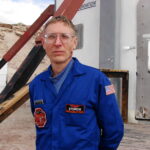
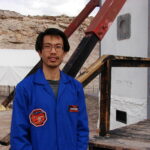
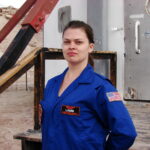
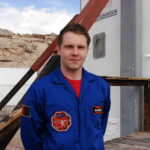
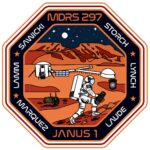
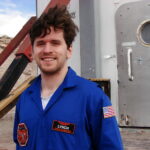
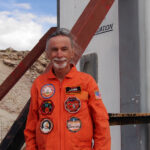
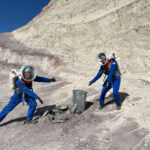
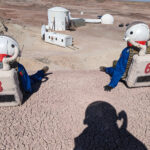

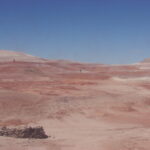
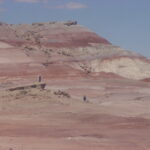
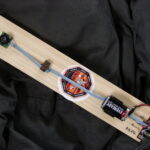
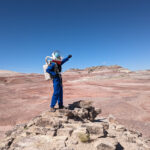
You must be logged in to post a comment.